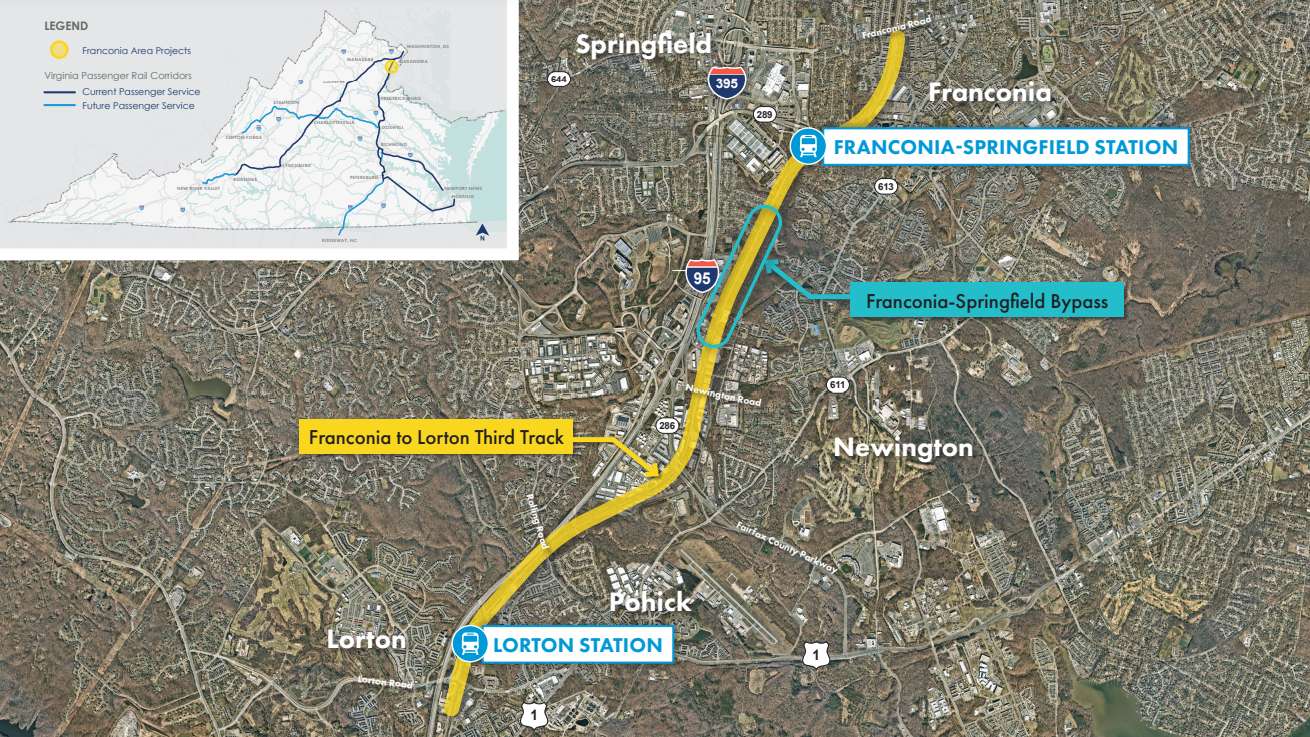
(Updated at 6 p.m.) A project to enhance the capacity of a key rail line through Fairfax County is chugging along, thanks to a major infusion of federal cash.
The Virginia Passenger Rail Authority has been awarded $100 million in federal funds to design and build a bridge that will allow Virginia Railway Express and Amtrak trains to cross over tracks approaching the Franconia-Springfield station (6880 Frontier Drive), Sens. Tim Kaine and Mark Warner announced yesterday (Thursday).
The bridge will relieve congestion and open up the possibility of additional passenger and freight service on the railway, which is one of Virginia’s busiest, according to the senators.
“Passenger rail is a vital connector for so many Virginians — carrying people to their work, their families, and their travel plans,” Warner and Kaine said in a joint statement. “We’re thrilled to see this funding make rail safer and more efficient for Virginians by addressing a critical chokepoint in a vital location, alleviating congestion for hundreds of Virginians every single day.”
Under development since 2021, the Franconia-Springfield Bypass will consist of a roughly 1-mile-long bridge that will carry passenger trains over two existing tracks for CSX freight trains just south of the rail station, VPRA officials said at a neighborhood meeting in July.
The bridge will have just one track, but it will be built to accommodate a future second track.
The project is part of a larger push by Virginia to improve its rail service between Fredericksburg and D.C. Other projects include an extension of a third track that currently starts in Alexandria for about six miles from Franconia to Lorton.
“Expanding passenger rail as an alternative to interstate travel is critical as traffic congestion in Northern Virginia continues to grow at an unsustainable rate,” VPRA Executive Director DJ Stadtler said. “Building the Franconia-Springfield Bypass will allow us to expand our state-supported rail service by alleviating train interference at the most congested point in Virginia…The bypass is key to providing Virginians with reliable, consistent, and convenient passenger rail service.”
According to VPRA, engineering on the bypass is scheduled to begin this year, with construction potentially kicking off in 2024 and finishing in 2026. VPRA has budgeted $405 million overall for the project, a spokesperson says.
The new federal funding comes from the Bipartisan Infrastructure Investment and Jobs Act that President Joe Biden signed into law on Nov. 15, 2021 and a fiscal year 2022 spending package, Warner’s office said.
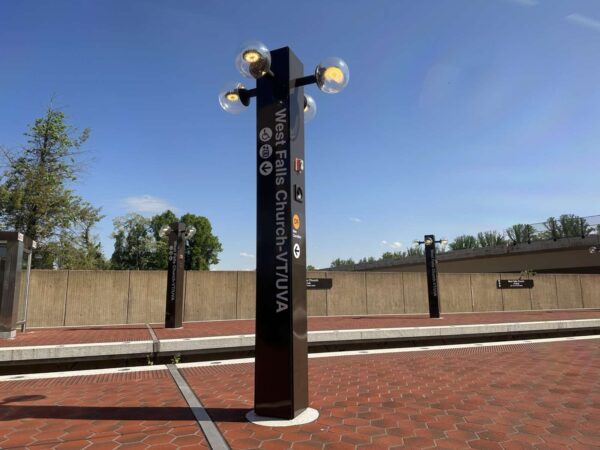
The last train out of the Vienna Metro station for the next month will depart at 12:20 a.m. tomorrow (Saturday).
After that, the Vienna, Dunn Loring, West Falls Church and East Falls Church stations will all shut down, as the Washington Metropolitan Area Transit Authority begins to replace a 40-year-old steel rail extending to Ballston.
All four stations will be closed through June 25. At that point, the Falls Church stations will reopen, but the Vienna and Dunn Loring stations will stay closed through July 16.
“Replacing some of the oldest tracks in our system is critical to safety and reliability, and crews will work 24/7 to complete this project as quickly as possible so we can get back to normal service,” Metro Chief of Infrastructure Andy Off said in a news release earlier this week. “We make every effort to minimize impacts to our customers, and we thank them for their patience while we continue to build a safe and modern Metro to serve the entire region.”
In addition to the rail replacement, the maintenance project will include upgrades of fiber-optic cables at the stations “to modernize communications and allow for more efficient maintenance in the future,” WMATA says.
Though the shutdown will primarily affect Orange Line travelers, the East Falls Church station in Arlington will also be closed to Silver Line trains, so anyone looking to transfer or travel between the McLean and Ballston stations will need to take one of the free shuttles provided by Metro.
The shuttle schedule during the shutdown’s current phase to June 25 is below:
Orange Line Shuttle: Local service between Vienna, Dunn Loring, West Falls Church, East Falls Church, and Ballston-MU stations during normal Metrorail operating hours.
- Every 5 minutes during rush hours. (6-9 a.m., 3-7 p.m.)
- Every 10 minutes all other times, including weekends.
Silver Line Shuttle: Local service between McLean, East Falls Church, and Ballston-MU stations during normal Metrorail operating hours.
- Every 5 minutes during rush hours. (6- 9 a.m., 3-7 p.m.)
- Every 10 minutes all other times, including weekends.
Orange Line Express: Express service between Vienna and Rosslyn stations.
- Service every 5 minutes during rush hours. (6-9 a.m., 3-7 p.m.)
- Service every 10 minutes during non-rush hours. (9 a.m.-3 p.m., 7-9 p.m.)
Silver Line Limited: Limited-stop service between Washington Dulles International Airport, McLean, and Rosslyn.
- Service every 5 minutes during rush hours. (6-9 a.m., 3-7 p.m.)
- Service every 10 minutes during non-rush hours. (9 a.m.-3 p.m., 7-9 p.m.)
The Silver Line Limited shuttle will be the fastest option for riders going to or from Dulles Airport, which accounts for about one-third of all trips on Metro’s Silver Line extension, according to WMATA.
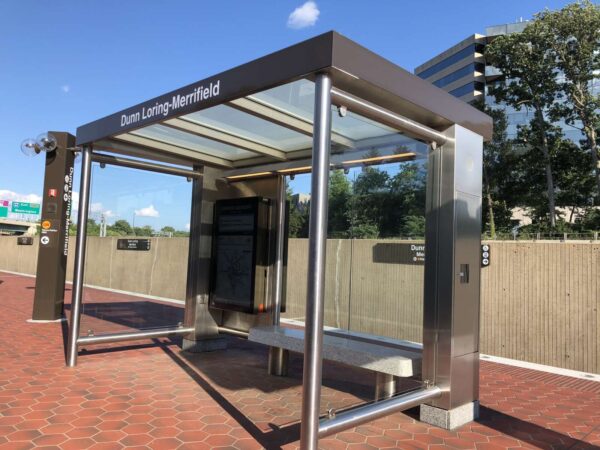
(Updated at 4:55 p.m.) A man has died after being pulled by a Metro train at the Dunn Loring station this afternoon, prompting a suspension of service between Vienna and West Falls Church.
The Washington Metropolitan Area Transit Authority’s Rail Operations Control Center and Transit Police Department received a report shortly before 1:30 p.m. that a person was being dragged by a train.
“Despite lifesaving measures, unfortunately the adult male individual was pronounced deceased after being transported to the hospital,” a Metro spokesperson said. “The investigation is in its early stages, but preliminarily it appears that an item being carried by the individual became caught in the train doors before it departed the station, dragging the individual down the platform.”
Shuttle buses and Metrobus routes 28A and 2B can also be used as alternate travel options were offered as alternate travel options until train service between the Vienna and West Falls Church stations was restored around 2:50 p.m.
The Orange and Silver lines also briefly switched to single-tracking between Ballston and Clarendon in Arlington.
Confirming social media reports that the man’s dog was found on a train at the West Falls Church station, Metro Transit Police say the man was holding the dog’s leash, which was the “item” that got caught in the train doors.
“The deceased cleared the platform and was on the platform away from the car, but upon closer review, a leash appears to be tied to the person, which was unfortunately caught in the door, leaving the dog with no ID inside of the car,” the police department said. “This obstruction caused the individual to be dragged on the platform and onto the tracks.”
The dog is now being taken care of by police, the department says, which noted that the pet “does not appear to be a service animal.”
WMATA only allows pets other than service animals on trains and buses if they’re “carried aboard in a secure container from which it cannot escape.”
According to police, surveillance video showed that the man was about 450 feet away from the train’s cab, and the train operator made two “safe door checks” before starting the vehicle.
The Washington Metrorail Safety Commission says it has launched an investigation into the incident.
Update on investigation at Dunn Loring #wmata pic.twitter.com/rGzEgUgAny
— Metro Transit Police (@MetroTransitPD) February 15, 2023
.@MetroTransitPD is on scene at Dunn Loring responding to a customer struck by a train. Orange 🟠 Line service suspended btwn Vienna and West Falls Church. Shuttle bus service requested. #wmata https://t.co/08nVrah4Tr
— MetroStrong (@wmata) February 15, 2023
Passenger critically injured at Dunn Loring Metro. PASSENGER'S DOG FOUND ON TRAIN AT WEST FALLS CHURCH METRO. #WMATA @ffxnow https://t.co/Mj8Md6b8yk
— Alan Henney (@alanhenney) February 15, 2023
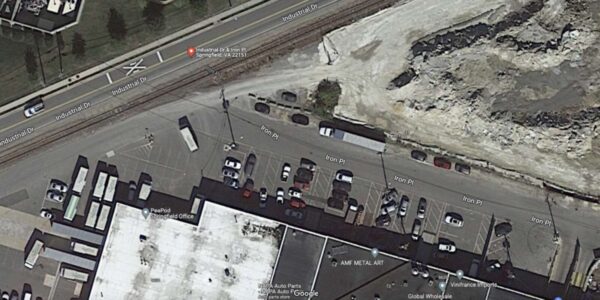
(Updated 1:50 p.m.) A freight train struck a tractor-trailer in Springfield this afternoon (Thursday), sending the truck driver to the hospital with minor injuries, the Fairfax County Fire and Rescue Department said.
Just before 1 p.m., the train struck the tractor-trailer at a low speed at the intersection of Iron Place and Industrial Drive, the department tweeted.
The intersection is adjacent to train tracks that lead to the Virginia Railway Express’ Backlick Road station.
The train did not have any passengers, and there were no traffic impacts, FCFRD spokesperson William Delaney told FFXnow.
NBC4, which captured the scene by helicopter, reports that the train had 25 cars and was backing up when it knocked the truck on its side.
Tractor trailer hit by train in Springfield. @ffxnow https://t.co/Cds876GDlS
— Alan Henney (@alanhenney) June 2, 2022
Units on the scene of a train that struck a tractor trailer Iron Place and Industrial Drive in Springfield. Low-speed impact. Truck driver being transported to hospital with minor injuries. No injuries on train. Most units returning to service. #FCFRD pic.twitter.com/ooVqP33DlG
— Fairfax County Fire/Rescue (@ffxfirerescue) June 2, 2022
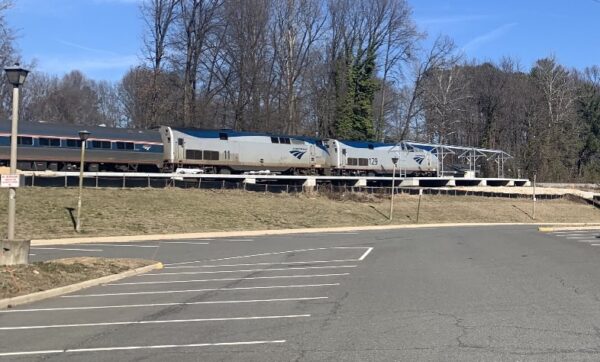
(Updated April 1) Empty parking spaces have been common sights near Fairfax County’s five Virginia Railway Express stations over the last two years.
Like those of other transit agencies nationwide, the commuter railway service’s woes during the COVID-19 pandemic have been well-documented, but a new ad campaign airing this month and next is looking to regain riders.
VRE hoped that the introduction of vaccines would mark a turning point in the pandemic, but the emergence of new Covid variants and the rise of remote work has stymied efforts to bring ridership levels back up.
“We’ve been at this and have just stayed focused and tried to keep it all in front of us,” VRE CEO Rich Dalton said at a board meeting on March 18.
While there were typically over 18,000 daily riders in 2019 and the first two months of 2020, VRE saw 1,532 daily passengers on average in the first half of 2021 and around 2,747 daily passengers in the second half.
This year, the average daily ridership was 2,083 in January, 2,785 in February, and 3,666 from March 1 through March 18 — the highest average since March 2020, according to data provided to FFXnow.
“We are trending up…pretty quickly,” Chris Henry, VRE’s director of rail operations, said at the meeting. “Our goal is to try and figure out what is that new baseline gonna be.”
VRE plans ad campaign
In an effort to attract returning and new riders, VRE plans to launch a marketing blitz that will include radio and mobile app ads.
VRE expects to spend no more than $50,000 on digital advertising campaigns for the remainder of this fiscal year, which ends on June 30.
Public affairs administrator Karen Finucan Clarkson said VRE will also try to engage riders through real estate and leasing agents as well as community events, such as farmers markets, festivals and fairs.
She said VRE plans to hand out information with a QR code that shows people how to ride, along with free coupons to ride.
The rail service is also working with businesses, chambers of commerce, and other organizations to pass along information to employees and new hires.
“VRE is…an important asset for the region and its strong economic growth, providing benefits whether their employees ride VRE or not,” Joe Swartz, director of government and community affairs, said. “Giving workers transportation alternatives leads to vibrant communities and economic growth.”
VRE will also participate in a statewide campaign called Re-Discover Your Ride. Set to launch on June 1, the campaign aims to help public transit agencies regain riders and is being funded by federal COVID-19 relief money.
VRE Planning Program Manager Nick Ruiz noted that other rail services have seen similar declines.
The Tri-Rail system in South Florida has returned to around half of its pre-pandemic levels, but its service operates in both directions throughout the day with major employment destinations along its route, according to Ruiz.
“I think that’s allowed them to see much more of a resilience,” Ruiz said.
To determine its new baseline, VRE is monitoring shifts in telecommuting, hybrid work schedules, and the federal government’s return-to-office plans. A 2019 survey indicated that most VRE passengers work federal jobs.
In his State of the Union address on March 1, President Joe Biden called for most federal workers to return to in-person work. He later released a plan to expand public-facing services starting in April.

